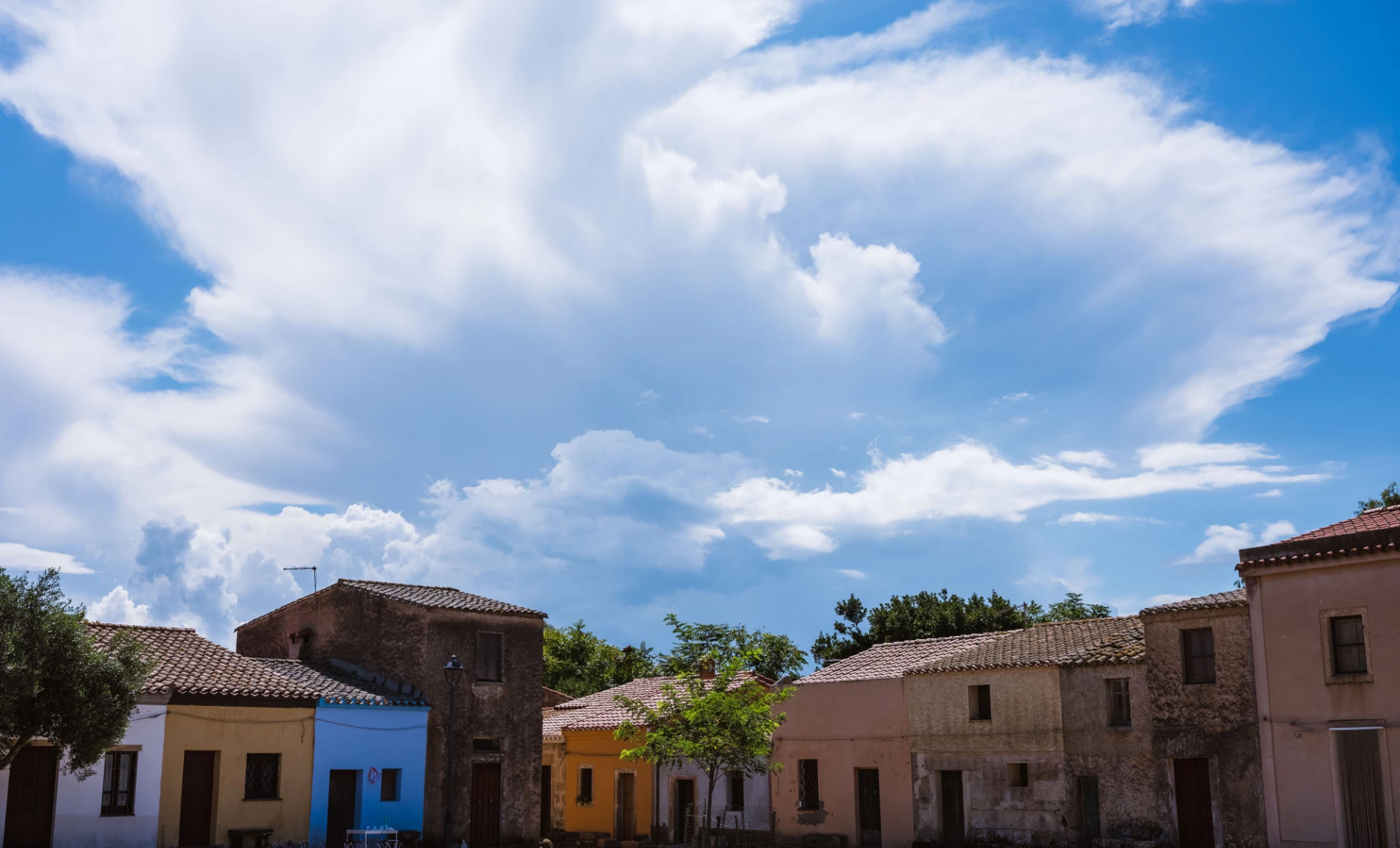Is Arutas is an enchanting strip of sea, a few kilometers from Cabras and Oristano. We are on the west coast of Sardinia, the one overlooking the Balearic Islands and Spain. Everything seems suspended in time here, according to the calm rhythm marked by the sea waves and the flight of birds.
Ph. Valentina Sinis - Trentaremi
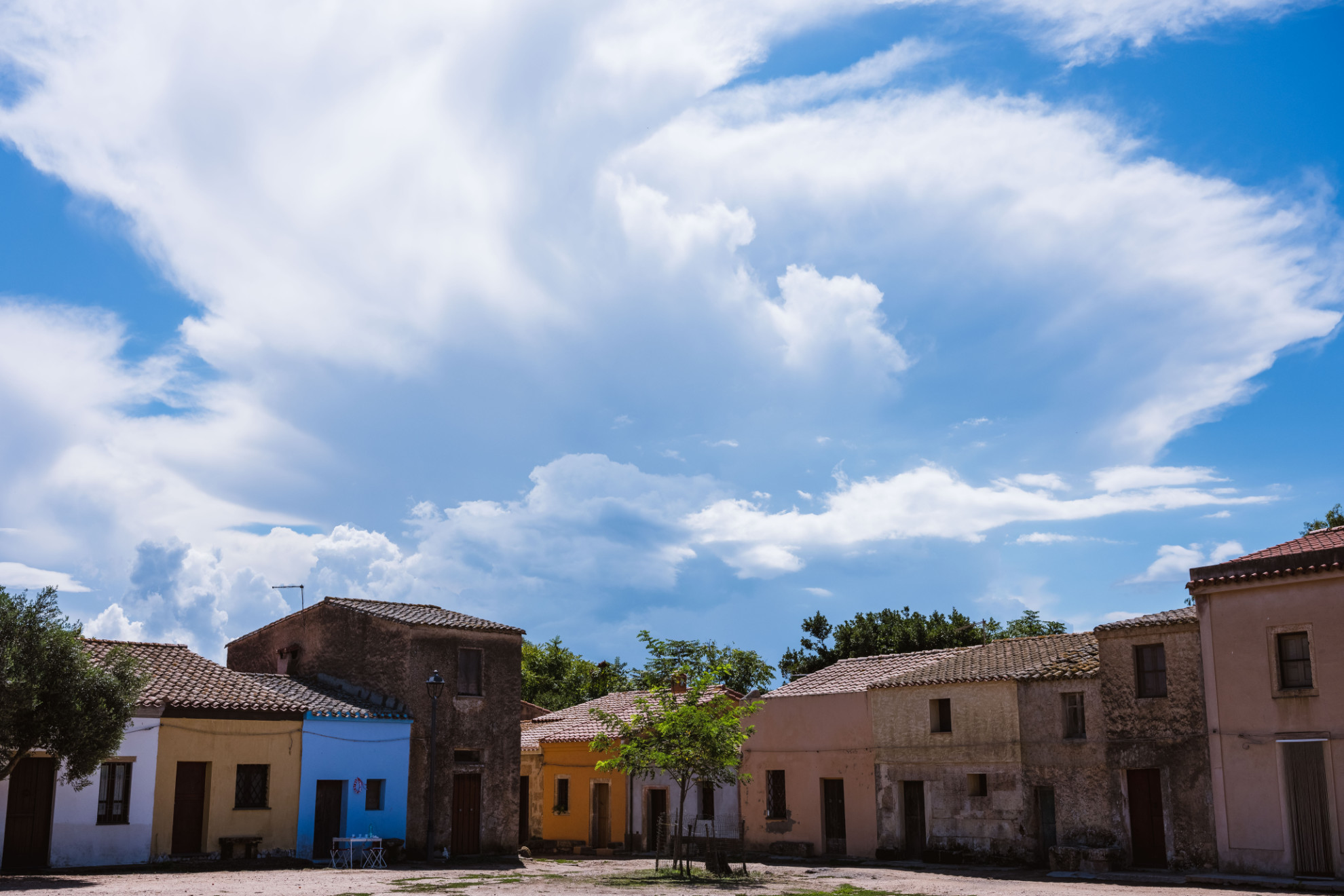
A dirt road takes you towards the hinterland. In the distance some low houses appear, arranged in a neat row, almost forming a platoon guarding the town. You get out of the car and, after a few steps, a quadrangular square opens up before your eyes.
It is a village, that looks like it came out, untouched, from a western movie: dust that rises at the first gust of wind, houses that wouldn't show up like Saloon or Posade, an open space where you can imagine those duels made famous by director Sergio Leone in his “Spaghetti western” movies.
Ph. Valentina Sinis - Trentaremi
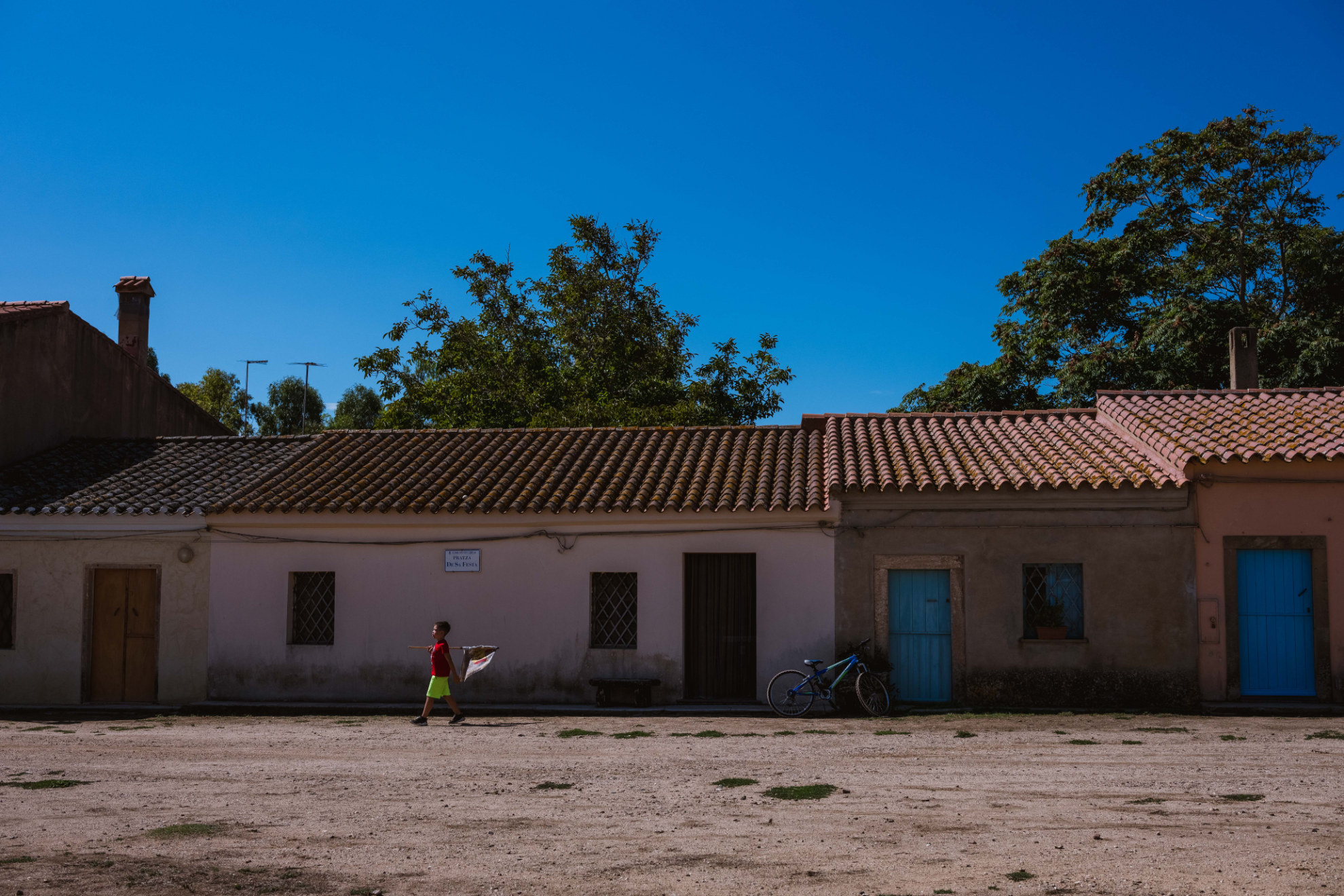
San Salvatore di Sinis is one of the oldest villages in Sardinia (and therefore in the world), built over a cemetery of the Nuragic era; but it was also, not surprisingly, the perfect set for some movies of the Western genre, such as “Garter Colt” (1967) and “God forgive my gun” (1968), before the production needs of Italian cinema made it necessary to recreate spaces and locations in the Cinecittà studios in Rome.
The small village, made up of a square and a few streets, is characterized by this atmosphere of perennial pause and suspension. Completely uninhabited during the year, a summer holiday destination for those coming from Oristano or the neighboring villages, San Salvatore di Sinis extends around the church that bears the same name and stands on an ancient pagan hypogeum, whose last inscriptions date back to the 4th century AD.
Ph. Valentina Sinis - Trentaremi
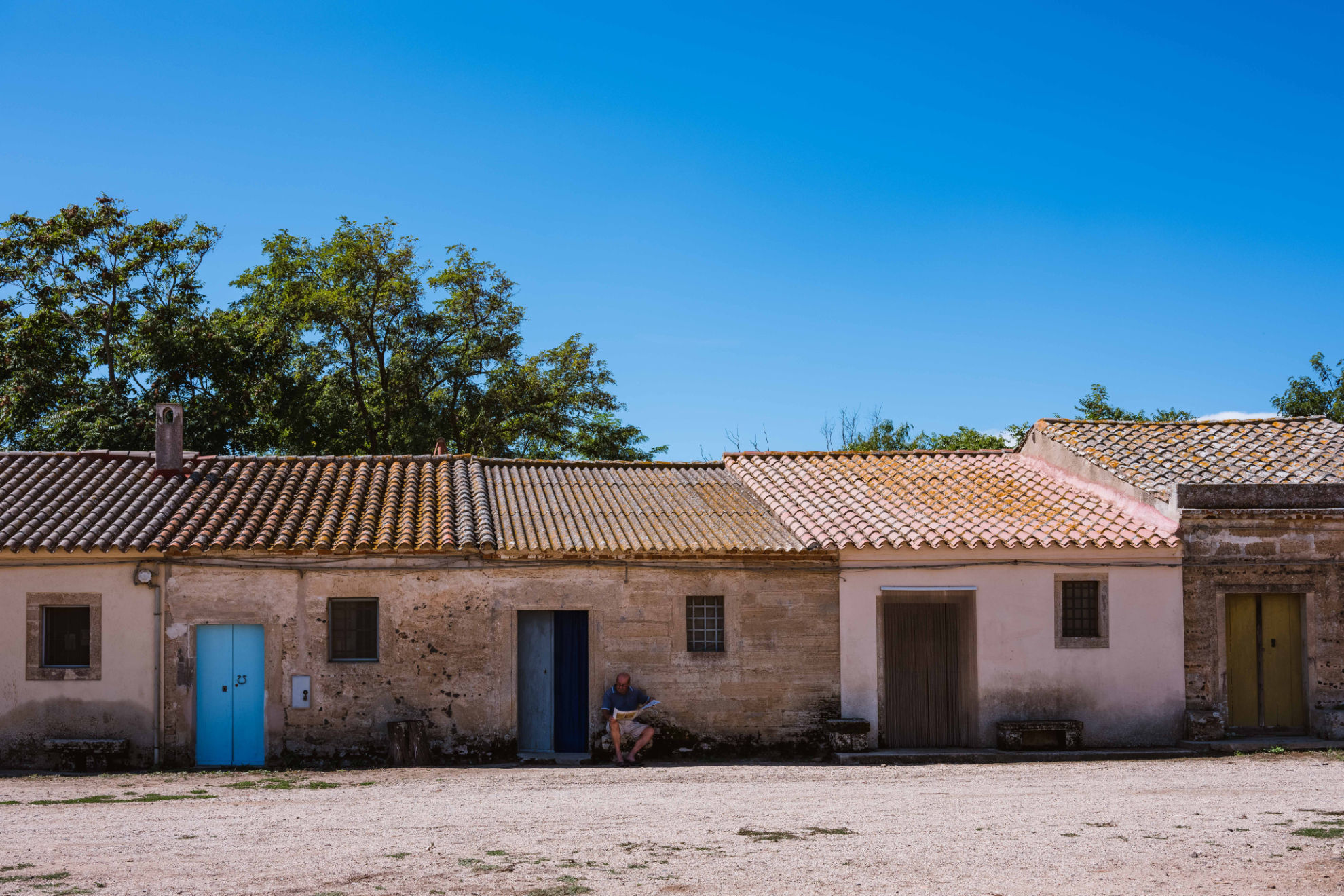
The heart of the town, just like a nucleus from which everything originated, is a well of the Nuragic age whose waters were considered curative for human health. It is no coincidence that the god of Medicine Asclepius was venerated right here, in Greek and Roman times.
Today San Salvatore preserves the charm of the stone walls that evoke images of Almeria or New Mexico. The small houses, built around the seventeenth century - when the Church was also built - have a name: sas cumbessias. They housed pilgrims during novenas in honor of the patron saint, whose celebrations fall in the first week of September, when one of the sacred most important events in Sardinia is organized: the “Corsa degli Scalzi”, that is Barefoot Race.
The church of San Salvatore di Sinis | Ph. Valentina Sinis - Trentaremi
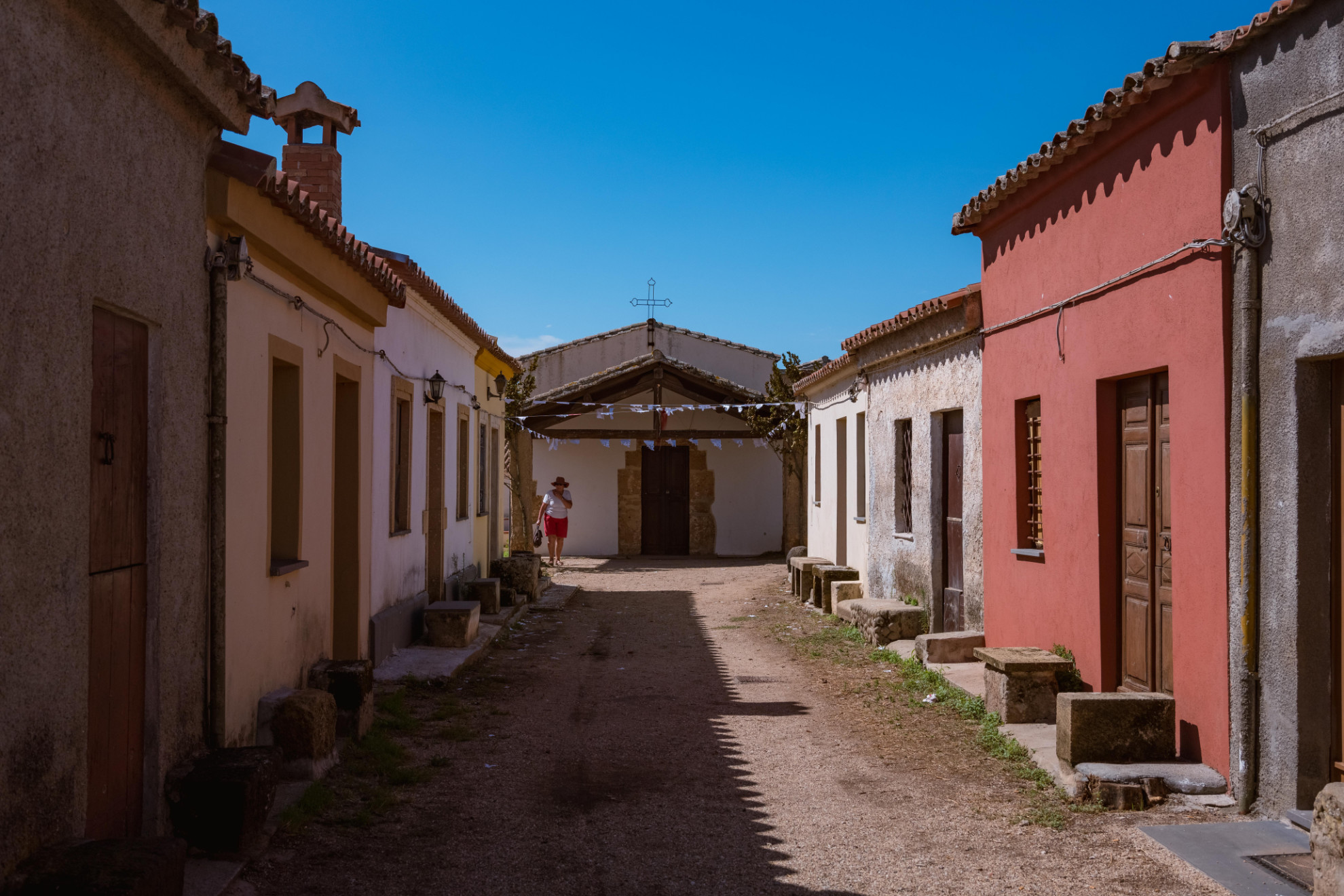
A procession made up of about 800 curridoris (runners) who, with the statue of the Saint on their shoulders and with the white habit, walk barefoot along the dirt roads, towards the church of Santa Maria Assunta di Cabras. To return to the parish the next day, bringing the statue back.

